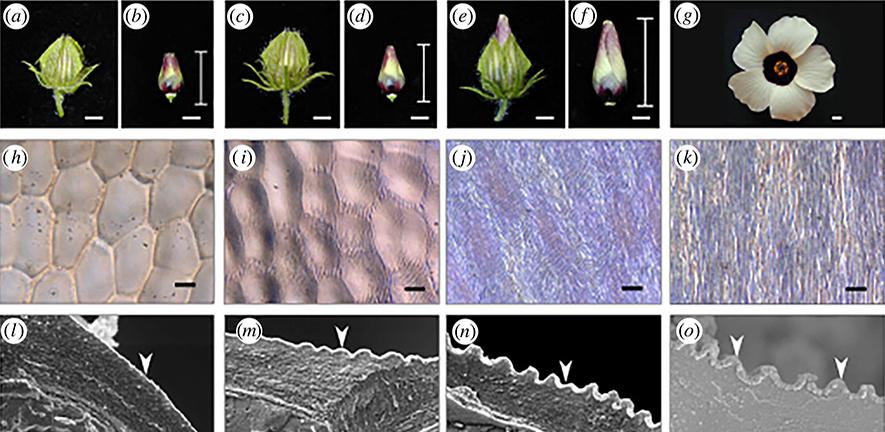
Submitted by Anonymous on Thu, 21/09/2023 - 11:30
New model boosts understanding of how petals develop nanoscale patterns that provide optical guides for pollinators
The nanoscopic patterns found on the surface of petal and leaf epidermal cells are known to influence several types of interaction with visiting insects, for example by providing optical and tactile clues for pollinators, by altering pollinator adhesion, or by providing patterns of colour by light diffracting grating arrays.
Professor Beverley Glover and her colleagues in the Evolution and Development group, working with Carlos Lugo Velez at the Sainsbury Laboratory, Cambridge University and colleagues at the Department of Polymer Science and Engineering at the University of Massachusetts, USA, are investigating the means by which these patterns develop in Hibiscus trionum, and have developed a mechanical model to describe how the striations of cuticles on the petal surface that produce iridescence in some flowers form, as the petal develops.
The team observed that the petal cuticle grows as a bilayer composite, and the model they developed shows the role played by the layers of differing stiffness in developing flowers with striations.
“The striations form due to cuticle overproduction relative to cell growth, which causes the surface layer of the cell to buckle. The buckling mechanism is similar to the bimetallic strip in a kettle where the two metals expand differently when heated but because they are fused together the strip itself bends and makes the connection that turns off the power supply,” said Dr Lugo Velez. ‘The orientation of the pattern is then determined by the elongation of the underlying cells, leading to an ordered, rectangular shape. In Hibiscus trionium we’ve shown that compressive in-plane stress caused by the expansion of the cuticle layers, where the thine outer layer is stiffer than the inner layer, causes the buckling, even if these expand at the same rate.”
‘We were able to establish the roles of the two layers’ different stiffnesses and factors including the curvature of the cell walls, the cell expansion and the thickness growth rates that determine the nature and variance of the striations that form’, said Professor Glover.
Read the paper:
Lugo, C.A., Airoldi, C., Chen, C., Crosby, A.J., Glover, B.J. 2023. Morphoelastic modelling of pattern development in the petal epidermal cell cuticle. J. R. Soc. Interface 20:20230001. https://doi.org/10.1098/rsif.2023.0001
